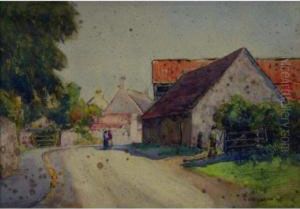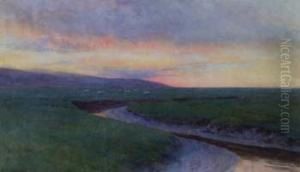Alexander Y. Whishaw Paintings
Alexander Y. Whishaw was a British-born artist whose life and work spanned across several continents, reflecting a diverse range of styles and subjects. Born in 1884, Whishaw's artistic journey began in the United Kingdom, but his quest for inspiration and new experiences soon took him far beyond his homeland. His work is characterized by a broad exploration of mediums and themes, from landscape paintings to portraiture, showcasing a versatile talent that evolved throughout his career.
In the early 20th century, Whishaw moved to Argentina, a decision that would significantly influence his artistic direction. The diverse landscapes and vibrant culture of South America provided fresh inspiration for his work. He became particularly known for his depictions of the Argentine countryside, capturing the vast pampas and rural life with a sensitivity and depth that resonated with both local and international audiences. His time in Argentina was also marked by his involvement with local artistic communities, contributing to the cultural exchange between South America and Europe.
Whishaw's style was eclectic, drawing from both traditional European techniques and the avant-garde movements of his time. He was adept at merging realism with elements of impressionism and expressionism, a skill that allowed his work to remain relevant and engaging as artistic trends evolved. Despite his international experiences, Whishaw maintained a connection to his British roots, often exhibiting his work in the UK and Europe.
Throughout his career, Alexander Y. Whishaw remained committed to exploring the artistic possibilities of his environment, whether through landscapes, portraiture, or more abstract compositions. His contributions to the art world were recognized in several exhibitions and collections across the globe. Whishaw passed away in 1950, leaving behind a legacy that continues to be appreciated by art historians and collectors alike. His work not only captures the essence of the locations he painted but also reflects the global and cross-cultural influences that defined the early 20th century art scene.

